

The hybrid blue/green class 104/108 worked the 'A' timetable service last Wednesday, Thursday and Friday and is seen here returning to Pentrefelin with the Empty Coaching Stock (ECS) at the close of play on Friday...
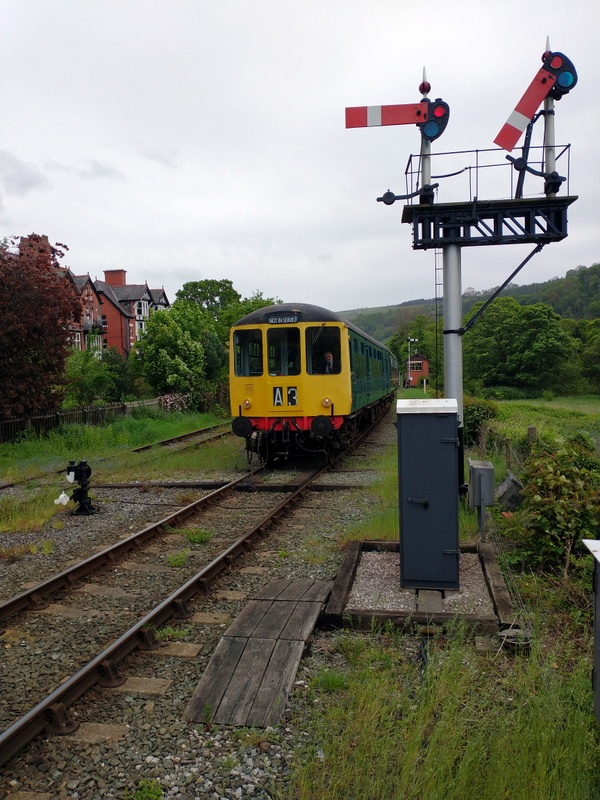
The following day the unit almost rubbed shoulders with class 31 31271 just outside Pentrefelin Yard...

The DMU had been temporarily shunted out of the yard to make room for the class 108 to be refuelled and the class 31 was working the 15.10 Llangollen - Carrog passenger service. By the time the locomotive returned with the 16.05 Carrog-Llangollen, the DMUs had been put back to bed...
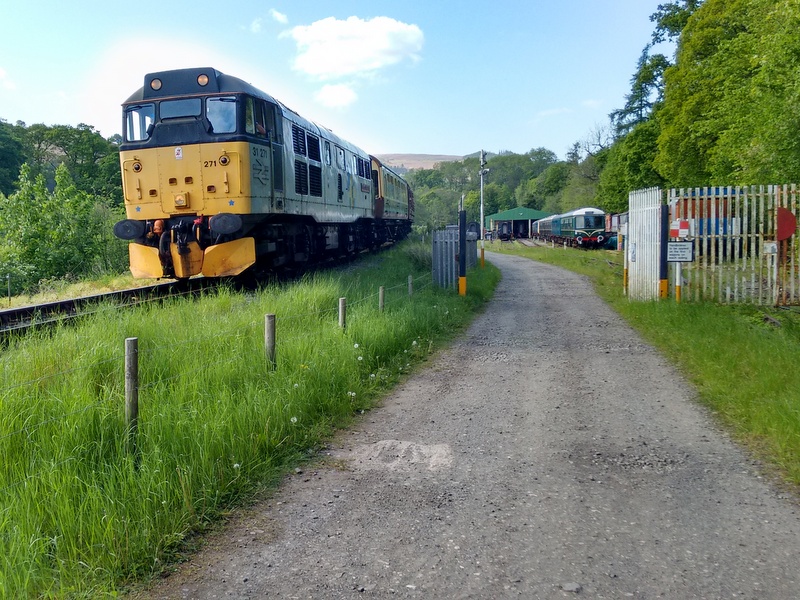
The coach behind the locomotive is the recently-restored GWR Hawksworth-design Engineers' Saloon that was built at Swindon in 1948.
We always make a point of telling potential new recruits that we are a friendly bunch of people to work with so what better advert can there be than this....
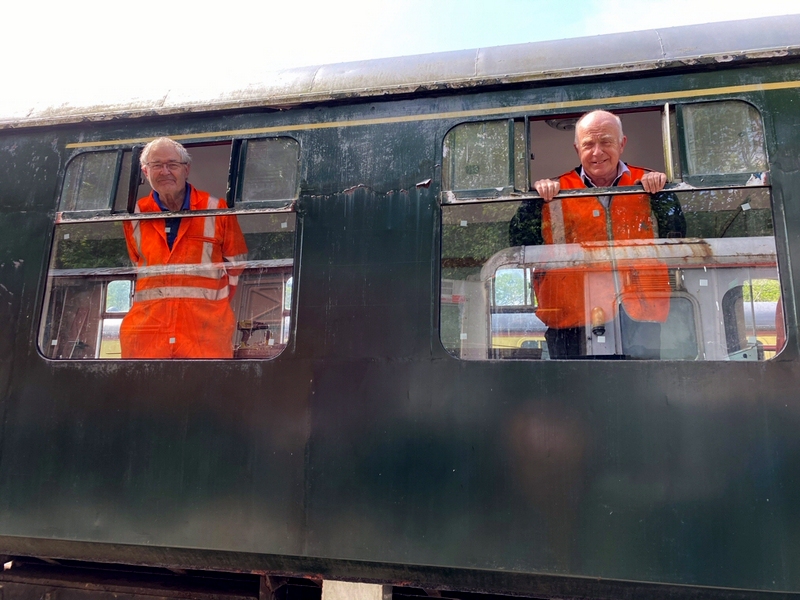
...even allowing for the fact that the picture may have been taken close to feeding time? :-)
Information about the work that was carried out on specific railcars at Pentrefelin and Butterley can be found in the unit-specific work sections below.
The hybrid unit had almost covered sufficient miles since its previous exam to be due a Fuel Point (FP) exam so that was carried out last weekend.
In keeping with all of the exams that we do, the FP exam requires us to work through, and sign off, a pre-defined list of checks but it is the most basic exam (i.e. the one with the fewest items) so, with good luck and a following wind, it can be completed by a team of three people in half a day provided nothing untoward is found. It involves checking (and rectifying if necessary) various things including oils, electrical equipment, brakes, heaters, lights and safety equipment.
The following pictures show an engine being topped up with oil...

and a gearbox being topped up with oil...
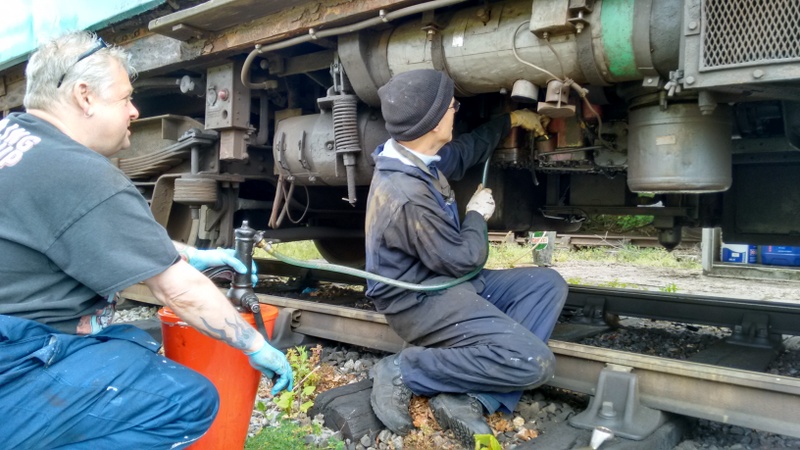
The vestibule metalwork on the secondman's side of the vehicle was given its first coat of gloss paint...
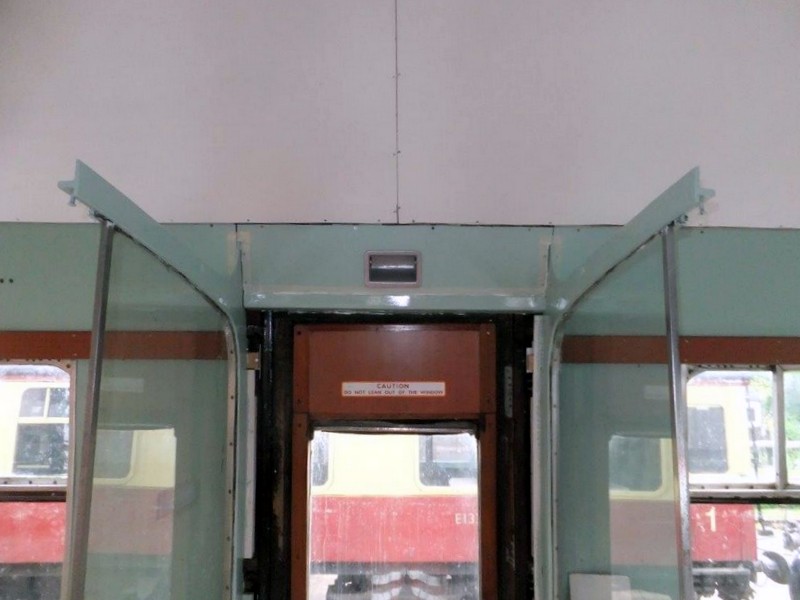
and the metal upstands in the middle compartment on the driver's side received a coat of primer...

The joint above the luggage rack received its first length of beading and a couple of vertical beads were fitted under the centre window in the middle compartment. They can all be seen in the following picture...
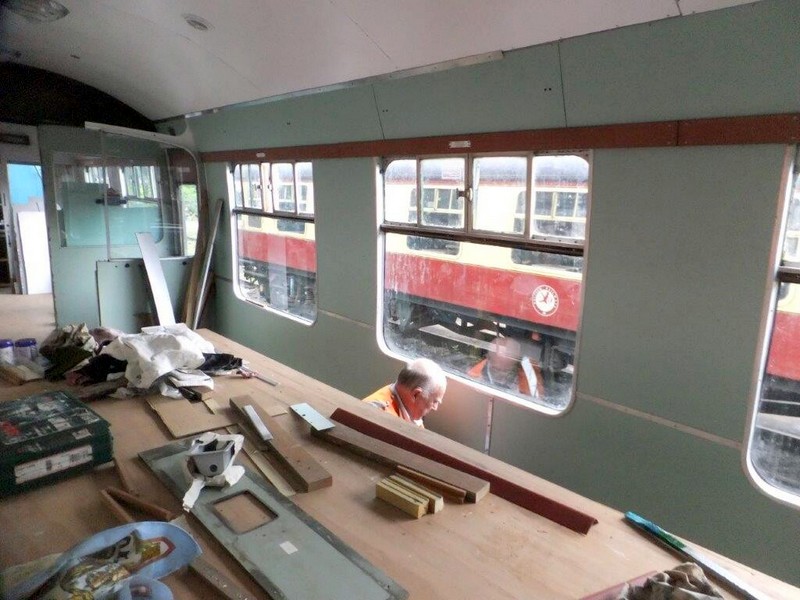
Like the hybrid class 104/108 unit, the class 108 was also due a Fuel Point (FP) exam so that was carried out at the weekend too. Although most of the things turned out to be "run of the mill" it was necessary to investigate a problem that had been reported with the driver's windscreen wiper on 51933.
The wiper behaved perfectly, and consistently, while being tested on a dry windscreen but had become rather erratic when it was required to clear a wet one! The problem was solved by replacing the valve and adjusting the air pressure and, because that was done during a dry spell, it was necessary to produce some artificial rain to test the quality of the repair...

In the space of a weekend the roof of the power car (50416) was given a coat of undercoat and a coat of gloss. The gloss proved to be somewhat trickier to apply than the undercoat so the initial idea of applying it in one coat was abandoned in favour of applying a thinned-down, slightly-patchy coat followed by a 'top-up' coat a couple of hours later. The result can be seen in the following picture although the centre section had not been given the 'top-up' because the first coat had not hardened enough to walk on.
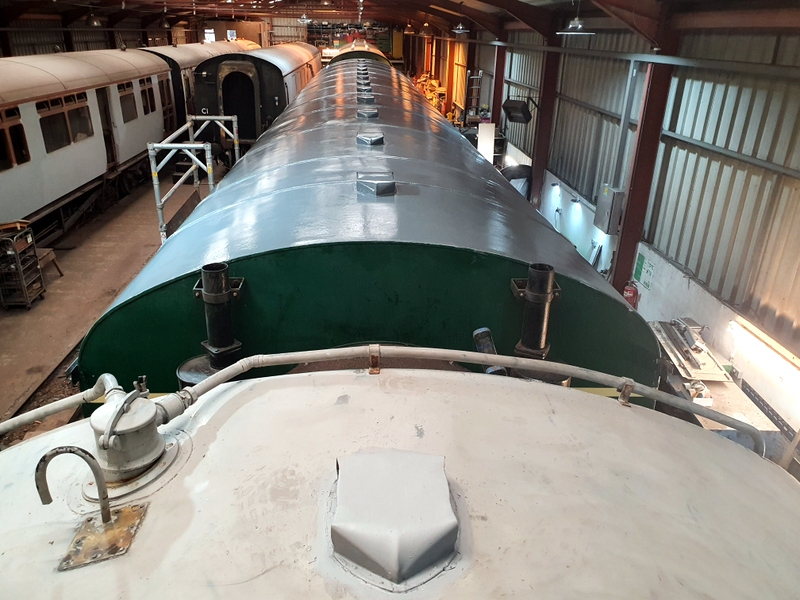
Attention then turned to the roof of the trailer car (56171), part of which can be seen at the bottom of the picture. It is mainly sound other than odd bits around the roof strips and vents, so it should require a fairly cursory amount of preparation before painting. Oddly the most recent light grey has gone very thin and the darker grey underneath can be seen through it in many places now.
A start was made on cleaning up the aluminium window surrounds on 56171. This is likely to be a long job but will be well worth it because it should improve the vehicle's appearance considerably.
The set was washed last Thursday. The power car proved especially difficult due to its all-over green nature (or should that be 'all over green with nature'?)...

but a team of three people eventually got the better of it using a large steam cleaner and several litres of truck wash...
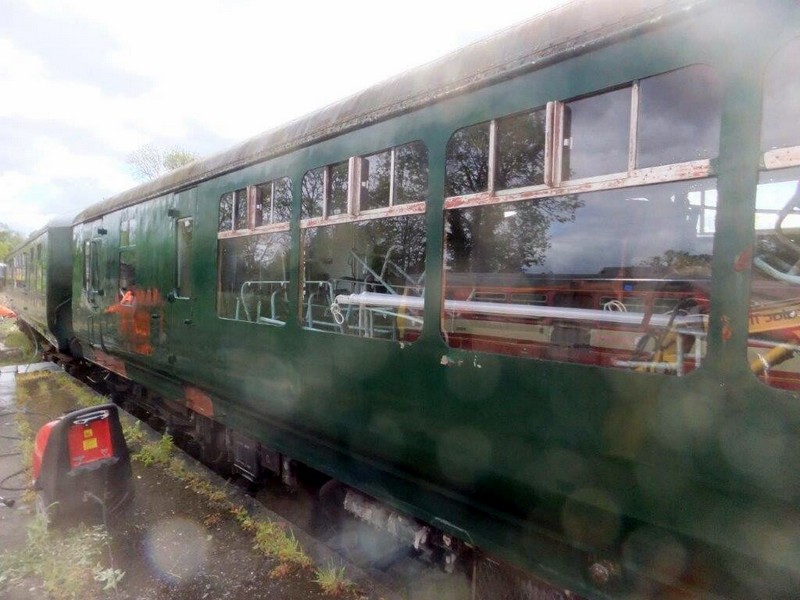
On the face of it, it looks as though the camera/phone might have been subjected to some steam cleaning and/or truck wash too :-)
The following picture shows the power car and trailer together...
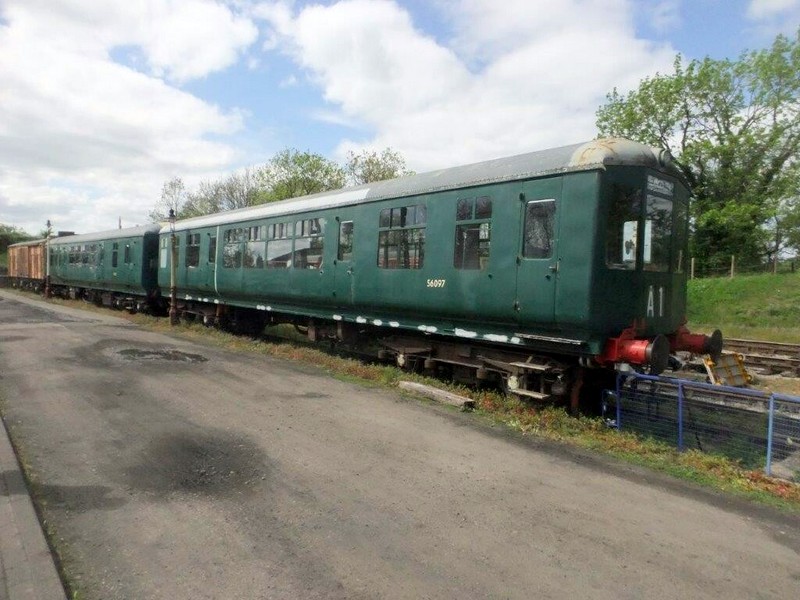
The inside of the trailer car was tidied and swept and some more work was carried out on the template for the cab window frames.
Thanks to Allen Chatwood, Dave Coogan, John Joyce, Mike Martin and Martin Plumb for supplying the pictures.
Since the previous report we have continued the pattern of providing the 'A' timetable service on Wednesdays, Thursdays and Fridays. On Wednesday 4th May the class 108 and the hybrid blue/green class 104/108 worked together as a 4-car unit in order to provide sufficient seating capacity for some pre-booked groups. Before and after that, the class 108 and the hybrid class 104/108 worked solo respectively.
The class 108 was also used for a VIP Special on Monday 25th April when it transported some visiting officers from the Heritage Railways Association and members of the Railway's Trust Board to Berwyn and back. It is seen here at Berwyn...
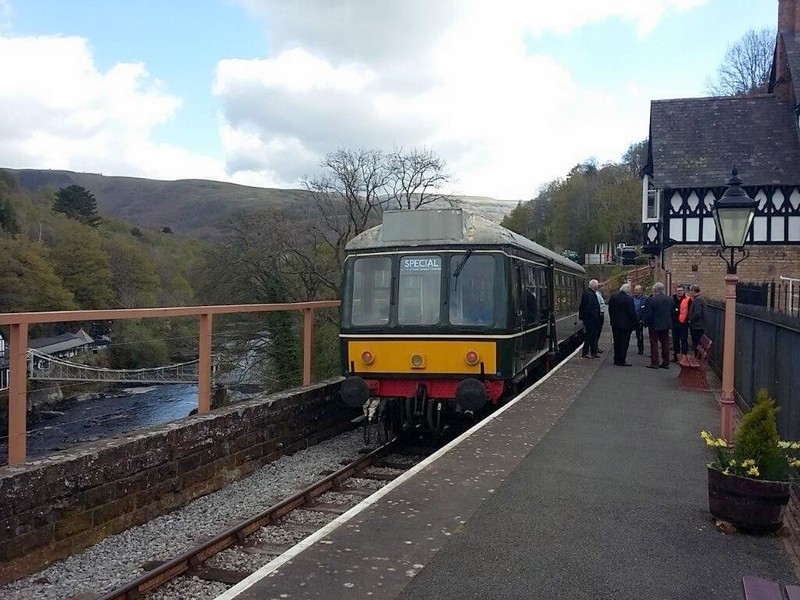
Information about the work that was carried out on specific railcars at Pentrefelin and Butterley can be found in the unit-specific work sections below.
The vestibule metalwork on the secondman's side of the vehicle was cleaned and given two coats of paint (primer and undercoat)...
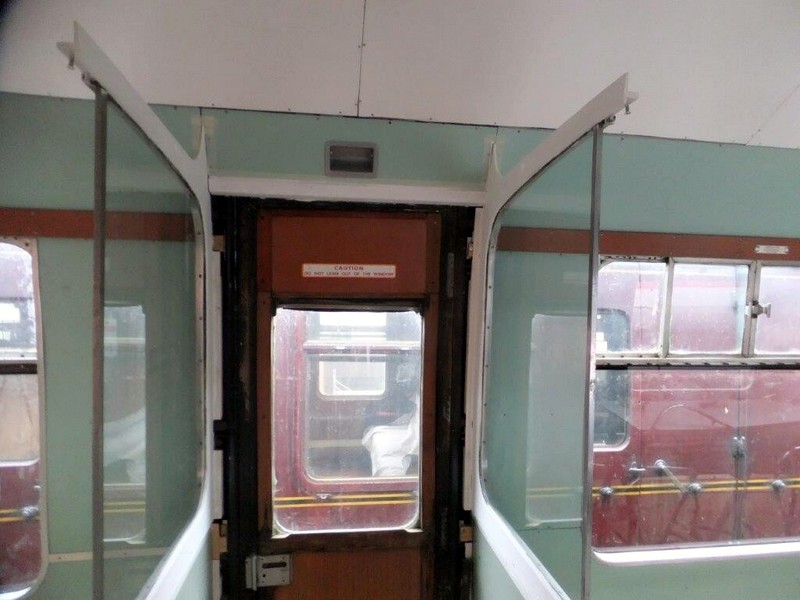
All of the old ventilation panels that are fitted above the sliding windows were replaced.
The 'z' section beading was fitted to the first five windows on the secondman's side and was followed by the fitting of the quadrant bead to the 'z' section...
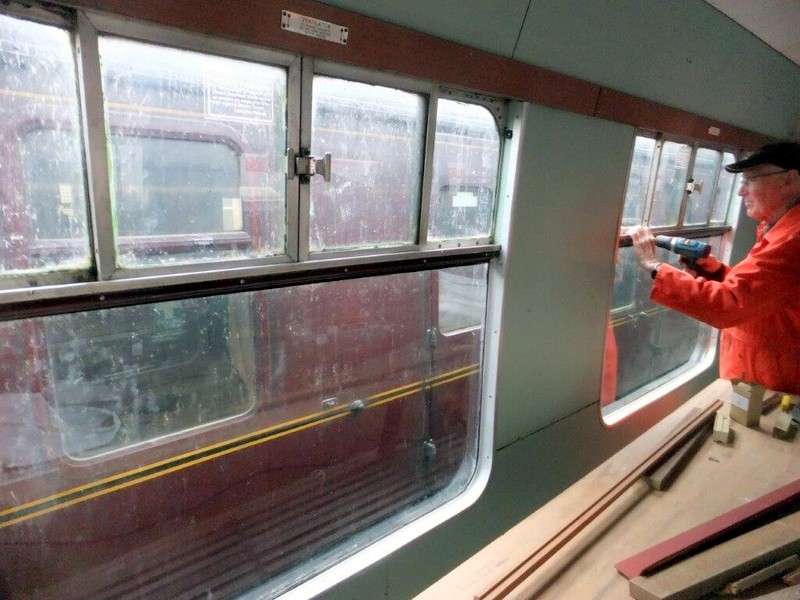
Following reports from drivers that the air&axle light in the cab(s) was not behaving correctly when the direction of the power car was changed from forward to reverse, steps were taken to determine the cause during the work meeting that took place at Pentrefelin at the end of April.
The air & axle light illuminates to provide confirmation that (a) both final drives are set to drive the vehicle in the same direction (after all a tug-of-war is not a good idea!), and (b) they both have sufficient air pressure. (a) is achieved by mechanical switches that provide the necessary electrical signal when both drives are in the correct direction and (b) uses air pressure switches to provide the necessary electrical signal when the pressure is above a threshold value.
It turned out that the problem was caused by a faulty reverse air pressure switch which was duly replaced. The following picture shows the red-painted replacement switch alongside its forward counterpart.
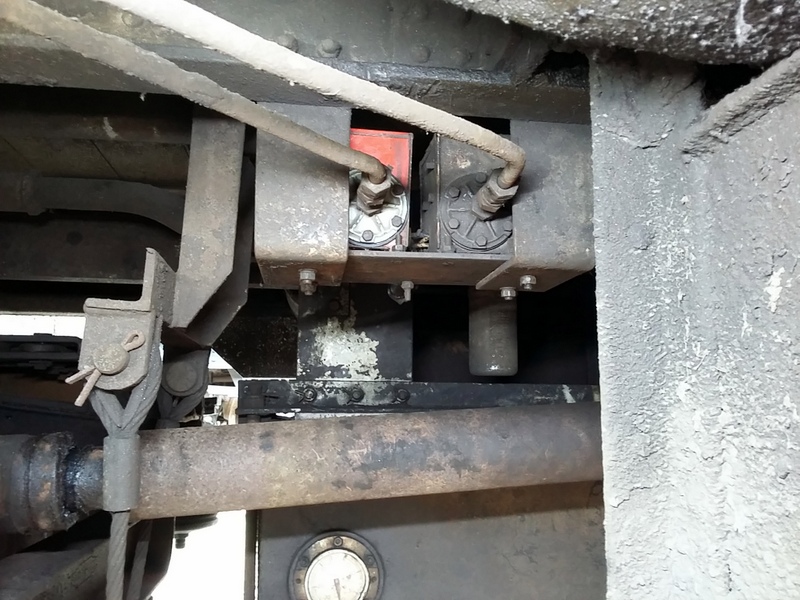
Work continued to prepare the power car roof for painting and, as anticipated, the cab roof required a lot of sanding etc. despite its small area because the paint there was at its thickest. It was also necessary to replace a number of pop rivets along the length of the roof...
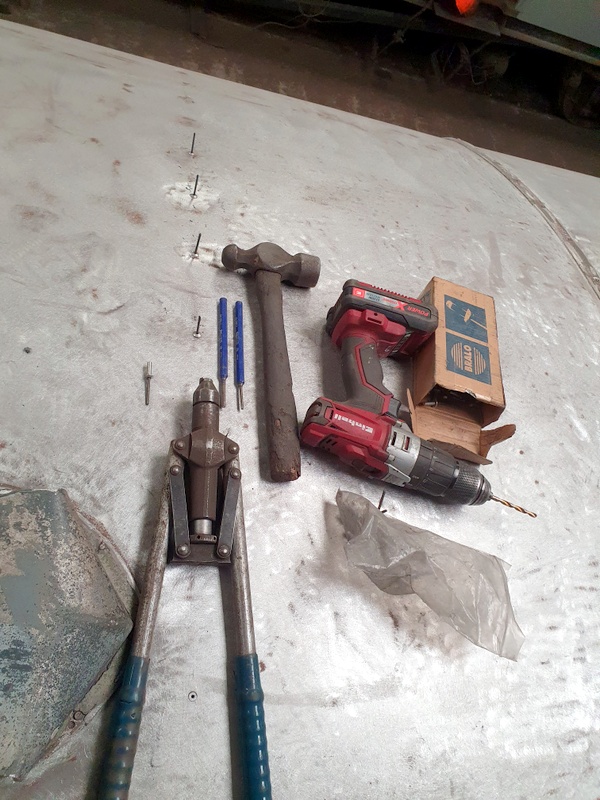
Once that had been completed the vehicle was taken outside for the dust to be washed off before returning to the shed in readiness for painting. The white patches at the right hand side represent ongoing repairs to some damage that was caused by an errant tree at Glyndyfrdwy...
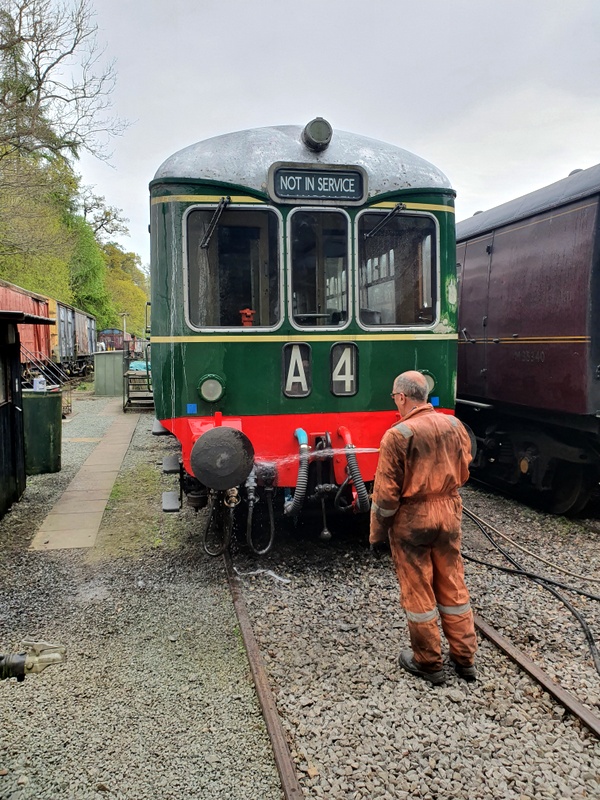
The next day a team of three people set about painting the primer, with two of them tackling the side 'margins' from a scaffolding platform and a third processing the ventilators and the middle section from above...
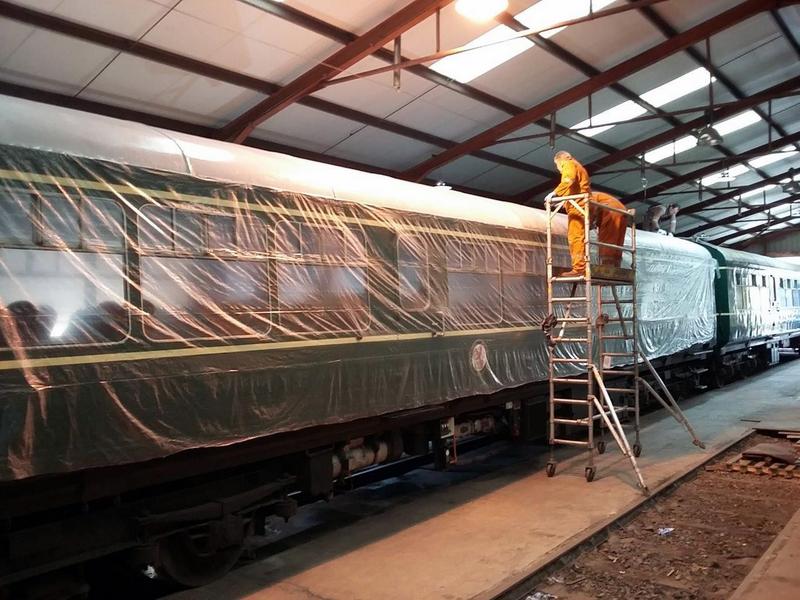
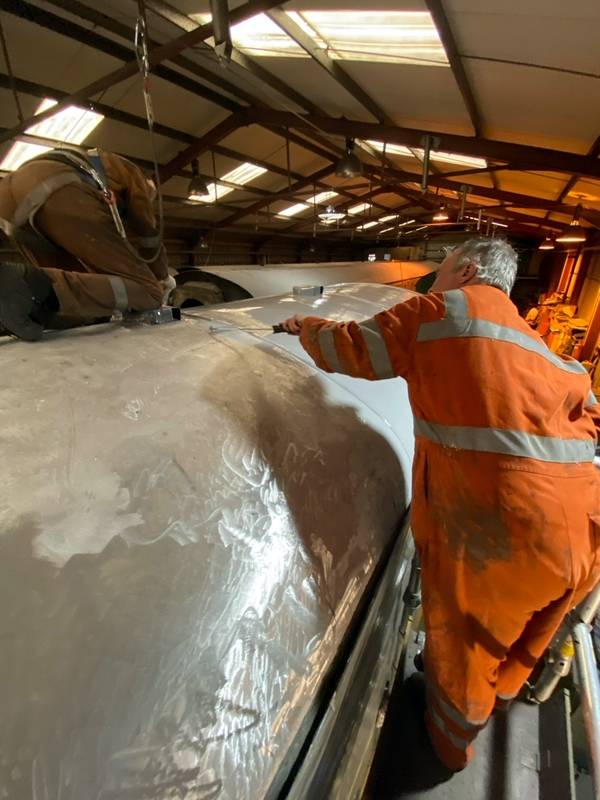
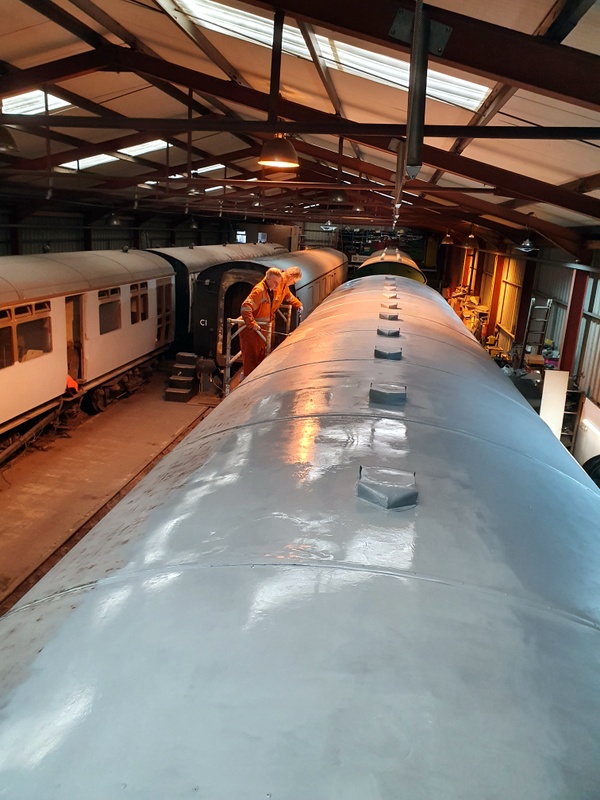
The next items on the agenda are for the application of the undercoat and top coat.
Class 127 vehicle no. 51618 (undergoing bodywork repairs at Llangollen)
Work progressed on the secondman's side of the vehicle. A couple of small areas of corrosion were cut out around the last passenger door and a suspect area of cantrail framework was identified above the guard's door after a roof repair patch and some of the skin had been cut away...
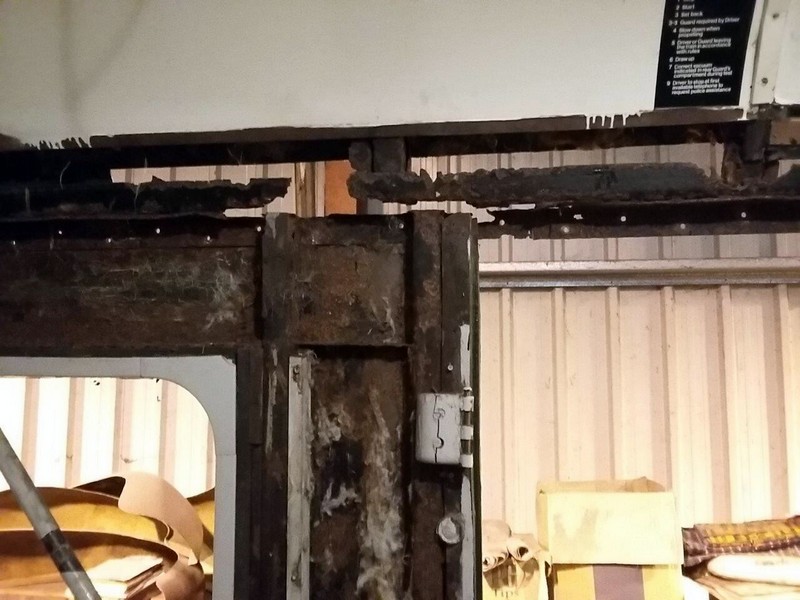
Although dealing with that will turn out to be time consuming, it should, at least, be a case of using a tried-and-tested recipe because some almost-identical damage was repaired on the driver's side.
The guard's inward-opening door was the next in line to be dismantled for the 'lock and scissors' treatment...
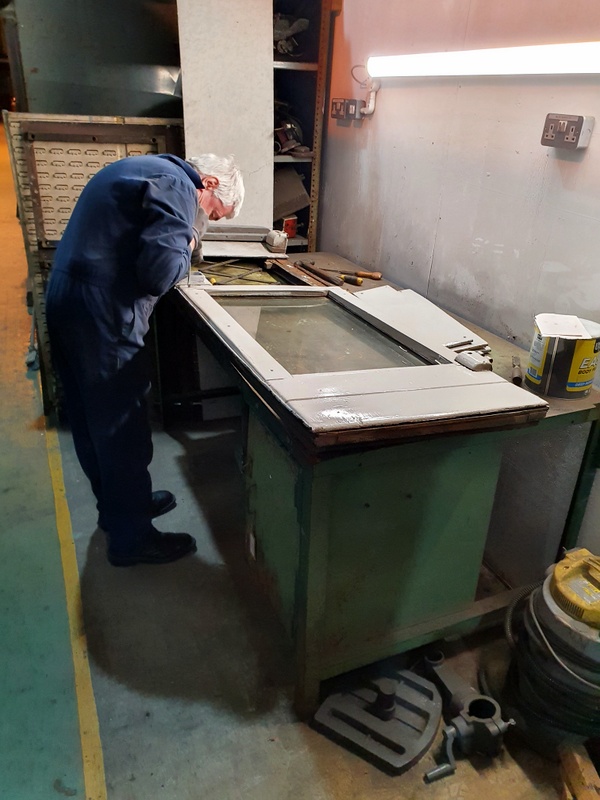
The interior fitting progressed with the installation of a 4 x 2 inch hardwood strip in the recess at the side of the driver's window...
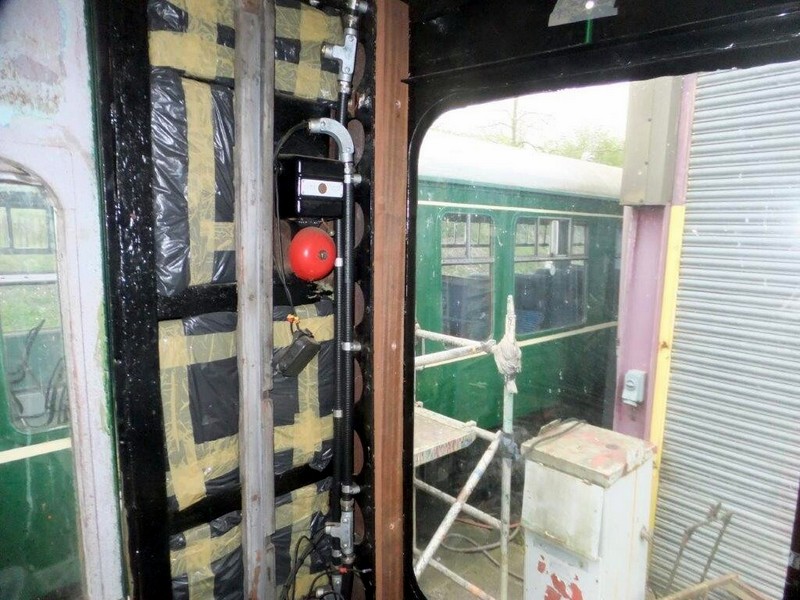
This is fastened to the metal support, packed at the back so that it is parallel with the external edge of the window frame, and becomes the main fastening for things such as the window frame and the corner metal wall pieces.
Further progress was made with the wall panelling in the middle compartment where the pieces above the luggage rack panels were drilled and fitted...
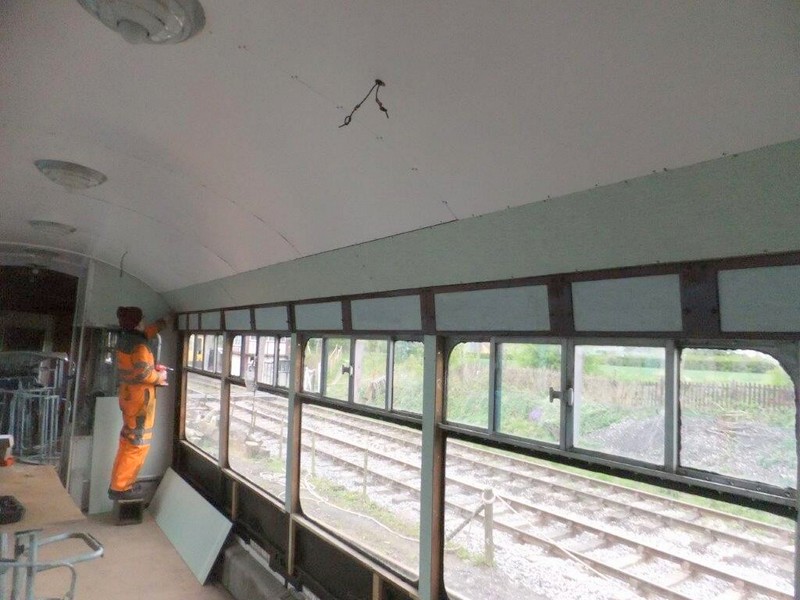
and one of the smaller panels above the first vestibule doors was fitted. This had to be slightly curved before securing it in place...
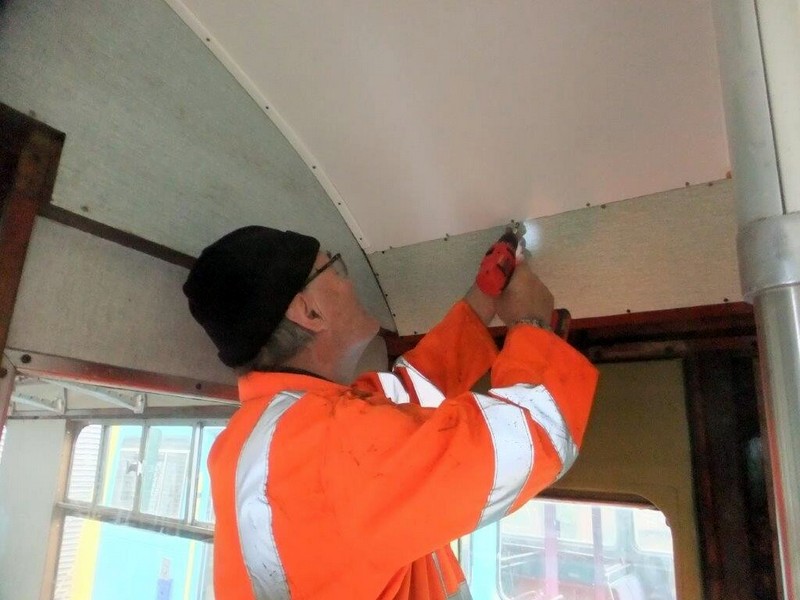
Thanks to Allen Chatwood, John Joyce and Graham Parkin for supplying the pictures.